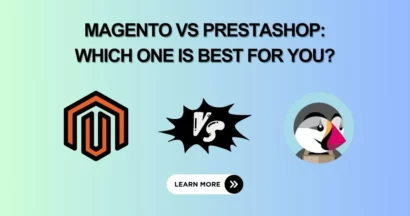Are you considering selling products online? It’s an excellent time to embark on the exciting journey of eCommerce.
However, with so many options out there, deciding which platform to use can be a tough decision. One common debate that arises is between Magento vs WooCommerce.
Magento and WooCommerce are both highly popular and powerful platforms, packed with features to help you succeed. To make the right choice, it’s essential to understand what each platform offers.
In this blog post, we will introduce you to WooCommerce vs Magento, highlighting their key features.
We will then compare them based on crucial factors like security and pricing. By the end, you’ll have a clearer idea of which platform is the ideal fit for your online business.
Let’s dive in and discover the perfect eCommerce platform for your online business!
If you are interested in this article, you might also want to read:
- WordPress vs Magento – Which e-commerce platform should be chosen?
- Free Magento Themes: A Great Way to Save Money on Your Online Store
- How to Choose the Best Magento Hosting Provider for Your Needs: Top 7 Recommendations
- Magento 1 vs Magento 2: What are the Key Differences?
- Premium Magento Themes: The Best Way to Showcase Your Products
Magento vs WooCommerce: What Are They?
Magento and WooCommerce are two of the leading self-hosted e-commerce platforms on the market, each with its own strengths and weaknesses.
Before we dive into a detailed comparison, let’s take a quick overview of each platform.
What is Magento?
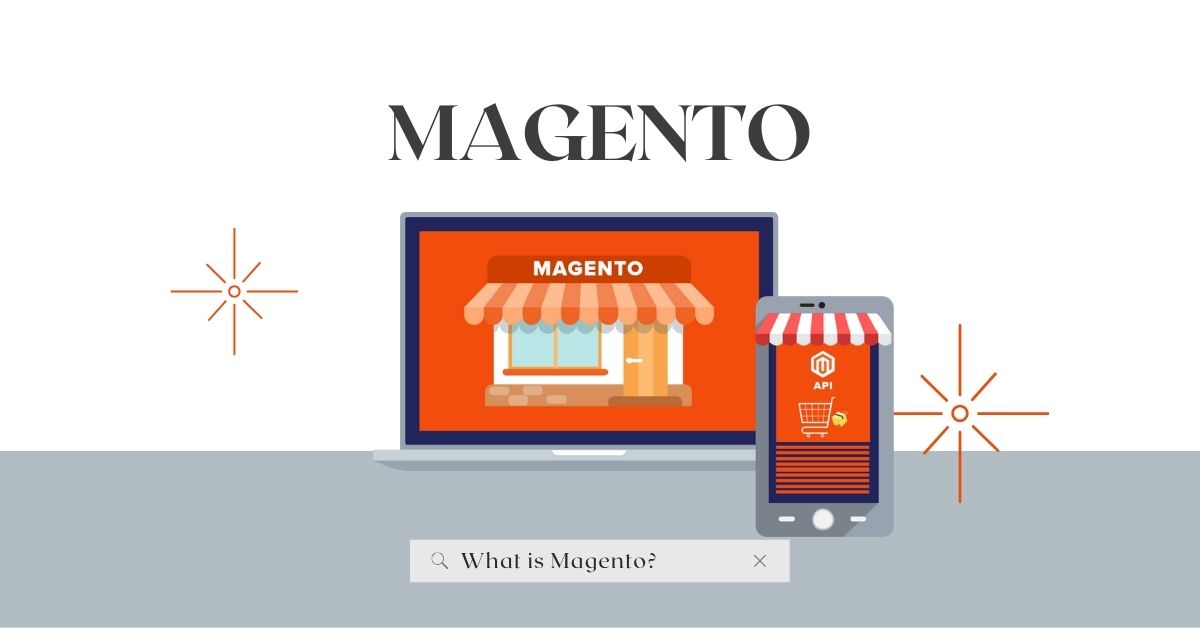
Magento is a powerful and flexible platform that is suitable for businesses of all sizes. It offers a wide range of features and customization options, making it a good choice for businesses that need a highly customizable eCommerce platform. However, Magento can be more complex to set up and manage than other e-commerce platforms.
Magento key features:
- Highly customizable and flexible
- API integrations
- Support for unlimited products
- Powerful catalog management system
- Robust SEO system
- Hundreds of free extensions
- Built-in multi-store functionality
- Large and active community of developers, users, and partners
What is WooCommerce?

WooCommerce is a free and open-source eCommerce plugin that works with WordPress. It is easy to set up and use, and it offers a wide range of features and extensions. WooCommerce is a good choice for small businesses and startups, but it may not be as scalable as Magento for larger businesses.
WooCommerce key features:
- Easy to set up and use
- Compatible with thousands of WordPress themes and plugins
- User-friendly interface
- Strong SEO system
- Large and supportive community of developers, users, and experts
Magento vs WooCommerce: A Side-by-Side Comparison
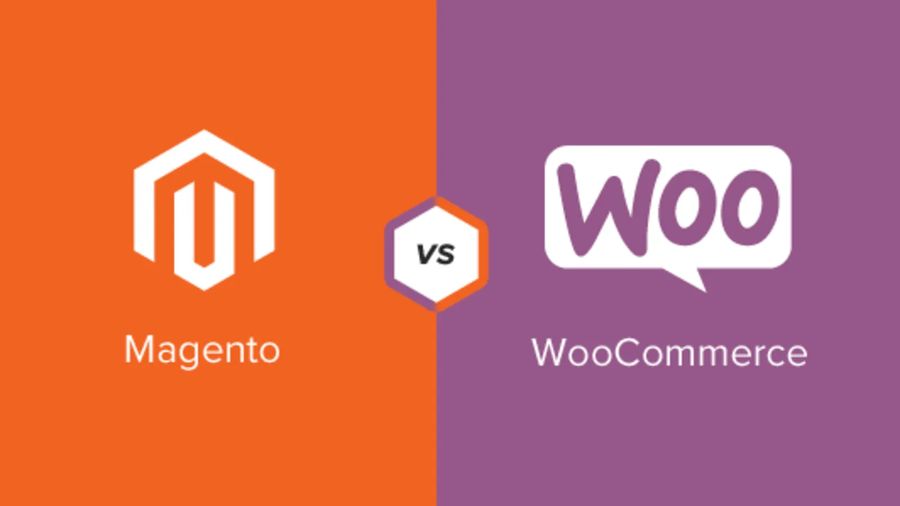
To find the right eCommerce platform for your online store, you need to consider your specific requirements and budget. You can use our comparison table to see how Magento vs WooCommerce differs in various aspects.
| Features | Magento | WooCommerce |
| Payment Gateways | Built-in support for PayPal, Authorize.net, and Braintree | Built-in support for PayPal, Stripe, checks, offline and bank transfers, and cash options. Offers extensions for additional gateways. |
| Ease of Use | Need technical knowledge | Beginner-friendly solution, especially for WordPress users |
| Speed and Performance | Faster loading times compared to WooCommerce | Depends on various factors like hosting plan, plugins, image optimization, etc. |
| Security | Requires fewer plugins and offers dedicated security patches | Requires active measures to safeguard the site |
| Scalability | Strong contender, especially with the Magento Enterprise Edition version | Strong contender, especially with the Magento Enterprise Edition version |
| Extensibility | Offers many features and complex configurable products | Highly extendable through plugins, themes, and add-ons |
| Marketing and SEO | Limited marketing and SEO features, requires additional plugins | Built on a CMS with built-in content marketing features, can be paired with marketing plugins |
| Support | Requires professional help for implementation and maintenance | Extensive documentation and community support |
| Pricing | Offers both free (Magento Open Source) and paid (Magento Commerce) versions | Free and open-source, with additional costs for themes and extensions |
Payment Gateways
Both Magento vs WooCommerce offer a range of payment gateway options to enhance the customer purchasing experience.
WooCommerce has built-in support for popular payment gateways like PayPal, Stripe, checks, offline and bank transfers, and cash options. It also offers extensions for additional gateways such as Amazon Pay, Square, Google Pay, and Alipay.

On the other hand, Magento provides support for PayPal, Authorize.net, and Braintree right from the start. It also offers extensions for additional gateways like Stripe, 2Checkout, Skrill, and Google Checkout.

The Verdict: There is no clear winner in this category as both platforms provide built-in support for major payment gateways and offer the flexibility to integrate additional gateways through extensions.
Ease of Use
WooCommerce is the more user-friendly option for beginners in the eCommerce platform. It can be easily added to your site through the WordPress dashboard and has a setup wizard to guide you. You can also learn how to install WordPress plugins if you are a newbie.
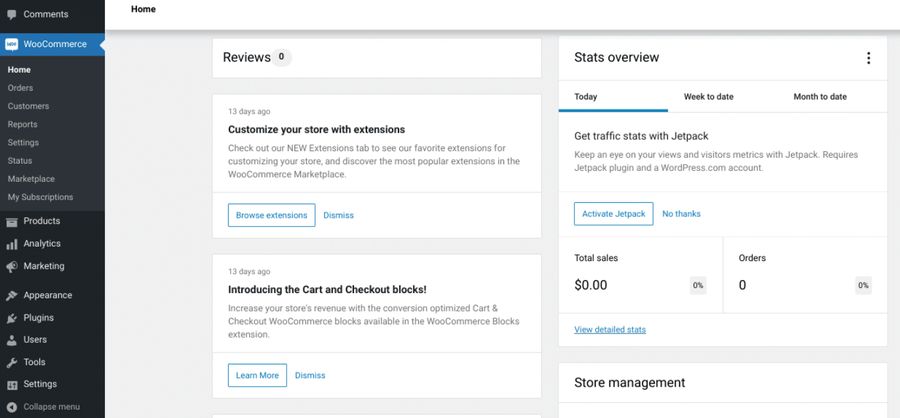
On the other hand, Magento is geared towards developers and requires technical knowledge. It has a user-friendly dashboard, but the setup and configuration process are more complex, requiring command-line installation and server setup.
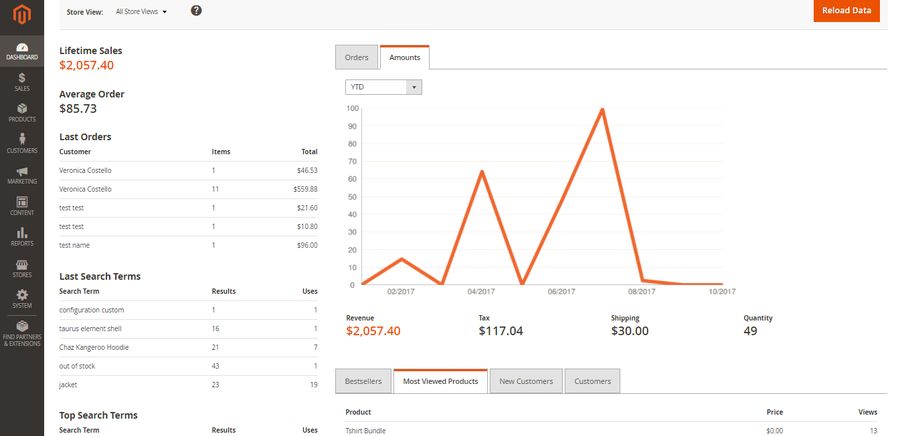
The Verdict: WooCommerce is a more beginner-friendly solution, especially for those already familiar with WordPress. Magento may be challenging for beginners and those without development skills.
Speed and Performance
The speed and performance of your online store are crucial for success. A study comparing popular eCommerce platforms found that Magento has faster loading times than WooCommerce.
However, comparing their speed and performance can be complex due to various factors such as hosting plans, plugins, extensions, and image optimization. WooCommerce also offers fast WooCommerce themes to enhance performance.
The Verdict: Both Magento vs WooCommerce can provide fast and reliable performance for your online store. However, if speed is your top priority, Magento may be the better choice.
Security
Security is vital for online businesses, and both Magento vs WooCommerce require active measures to protect your store.
Magento typically has fewer plugins, reducing the risk of security vulnerabilities. Its security extensions are more comprehensive than those for WooCommerce.
Magento also provides dedicated security patches, although professional help may be needed for implementation. If you’re willing to invest in security assistance, Magento may be the preferable choice.
The Verdict: Magento generally offers better security features with fewer plugins and more comprehensive extensions. However, it may require professional help in implementing security patches. WooCommerce still provides security options but may require more plugins for complete coverage.
Scalability
When comparing scalability, Magento is strong, but mainly in its Commerce version.
WooCommerce can also handle unlimited products and process thousands of orders.
Both platforms require powerful eCommerce hosting to handle traffic spikes. Magento’s Open Source version is self-hosted, while Magento Enterprise includes web hosting.
The Verdict: Magento vs WooCommerce are both scalable options, with Magento being particularly strong in its Commerce version. Consider your specific needs and hosting capabilities when deciding between the two platforms.
Extensibility
Both platforms have a wide selection of extensions available.
WooCommerce Marketplace and the WordPress Plugin Directory offer thousands of extensions.
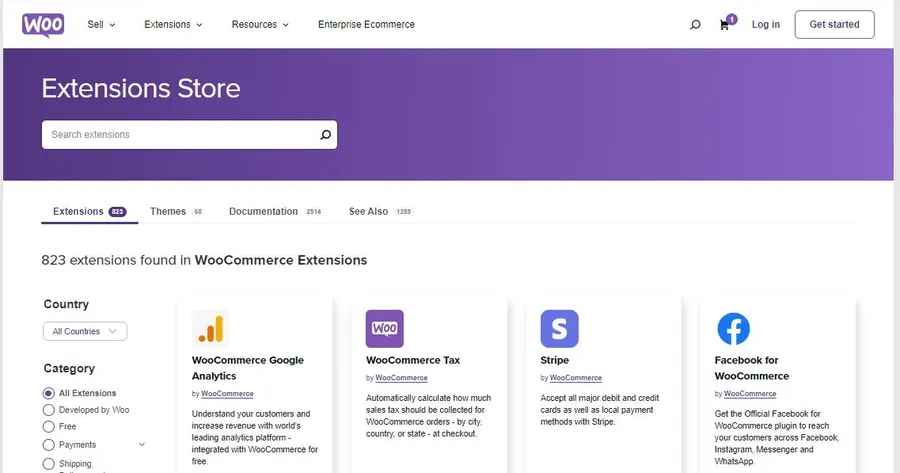
While Magento offers both free and paid Magento 2 extensions.
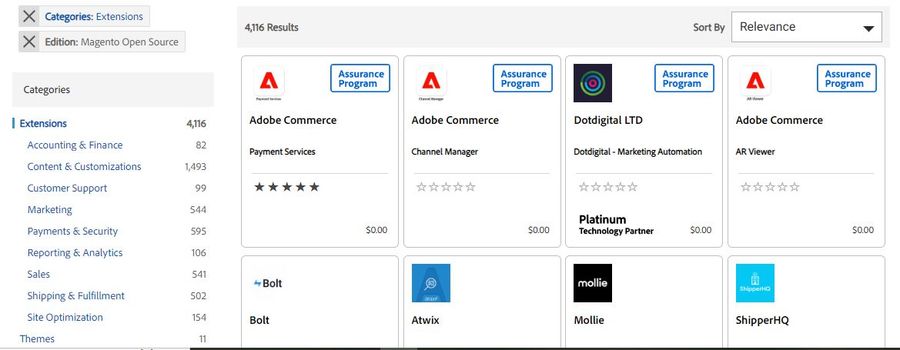
WooCommerce extensions are generally more affordable, while Magento’s extensions tend to be more powerful due to their complexity.
Installing plugins is easier on WooCommerce while setting up and configuring extensions on Magento usually requires web development skills.
The Verdict: Both WooCommerce vs Magento are highly extendable through plugins and extensions. WooCommerce offers more affordability and easier plugin installation, while Magento’s extensions are more powerful but require more technical expertise for setup and configuration.
Marketing and SEO
Marketing and SEO are important for driving traffic and increasing sales.
WooCommerce, built on a CMS initially for blogging, includes features for content marketing and can be enhanced with various plugins like Yoast SEO vs Rank Math.
Magento lacks built-in blogging functionality but offers add-ons for site optimization and integration with tools like Google Analytics. Advanced marketing tools are available in Magento Enterprise, not the Community version.
The Verdict: WooCommerce has built-in content marketing features and a wide range of plugins. Magento requires add-ons for blogging but provides advanced marketing tools in its Enterprise version.
Support
Both Magento and WooCommerce have large and supportive communities, making it easy to find resources and answers online.
WooCommerce provides a public knowledge base (WooCommerce Document) and offers support for paid extensions.
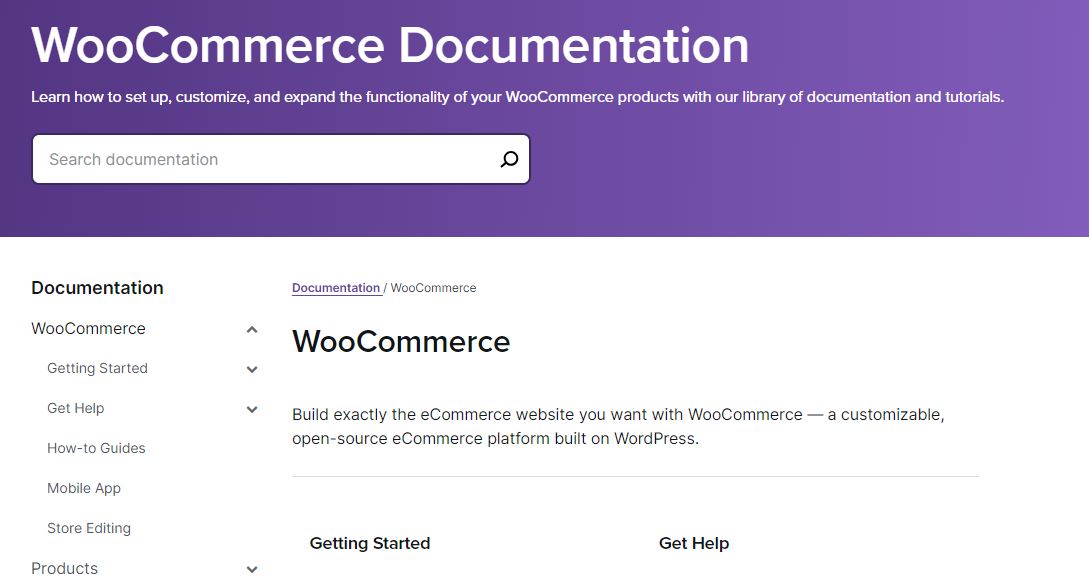
With the free version of Magento, you can find help online, but dedicated Magento support is only available with a Magento Enterprise Edition plan. For complex issues, you may need to hire a developer.
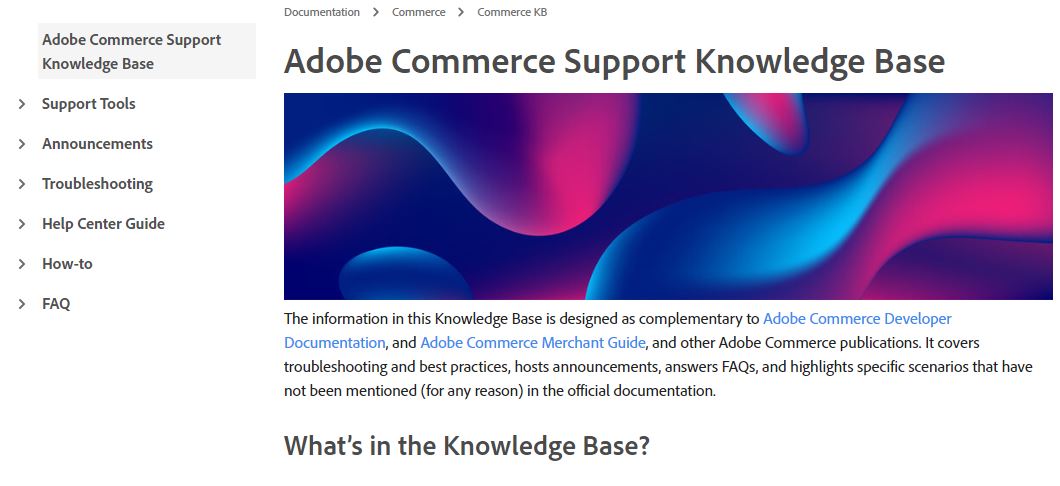
The Verdict: WooCommerce offers more accessible support through its knowledge base. Magento’s dedicated support is only available with a paid plan.
Pricing
Cost is an important consideration when choosing a platform. Both Magento vs WooCommerce offer their core code for free, but additional costs come into play for customization and extensions. So how much does Magento cost? And what are the best WooCommerce pricing plans?
The pricing of premium extensions can vary, with WooCommerce’s being generally more affordable than Magento’s. Magento Enterprise pricing is not disclosed on their website, but it can be around $2,000 per month.
Both Magento vs WooCommerce require purchasing a domain and hosting plan, but WooCommerce tends to be less expensive overall.
The Verdict: While both platforms offer free core code, the cost of customization and extensions can vary. WooCommerce generally has more affordable extensions and is overall less expensive.
Which platform is right for you?
If you are a small business and do not have much technical knowledge, WooCommerce is the better choice. It is easier to use and more affordable than Magento.
If you need a more powerful and scalable eCommerce platform, Magento is the better choice. It has more features out of the box and is more extensible than WooCommerce.
However, Magento is also more complex to set up and manage, and it requires more technical knowledge.
Ultimately, the best eCommerce platform between Magento vs WooCommerce for you will depend on your specific needs and budget.
Read More: Transform Your Storefront with the Best Magento Themes in the Market
Contact US | ThimPress:
Website: https://thimpress.com/
Fanpage: https://www.facebook.com/ThimPress
YouTube: https://www.youtube.com/c/ThimPressDesign
Twitter (X): https://twitter.com/thimpress

